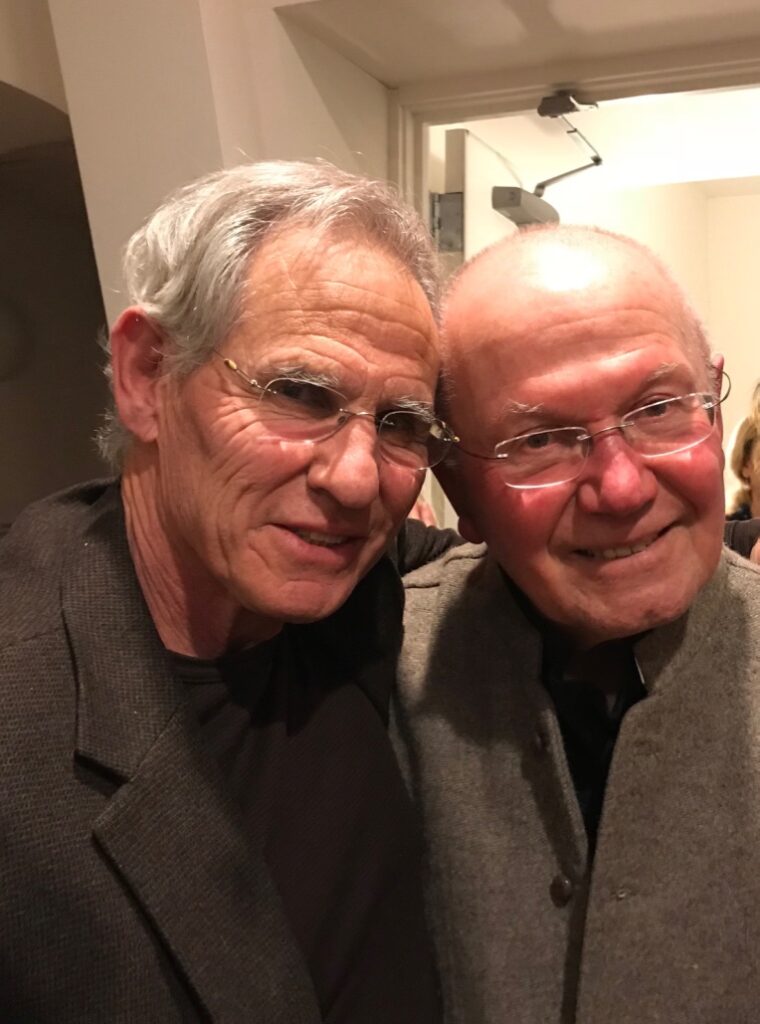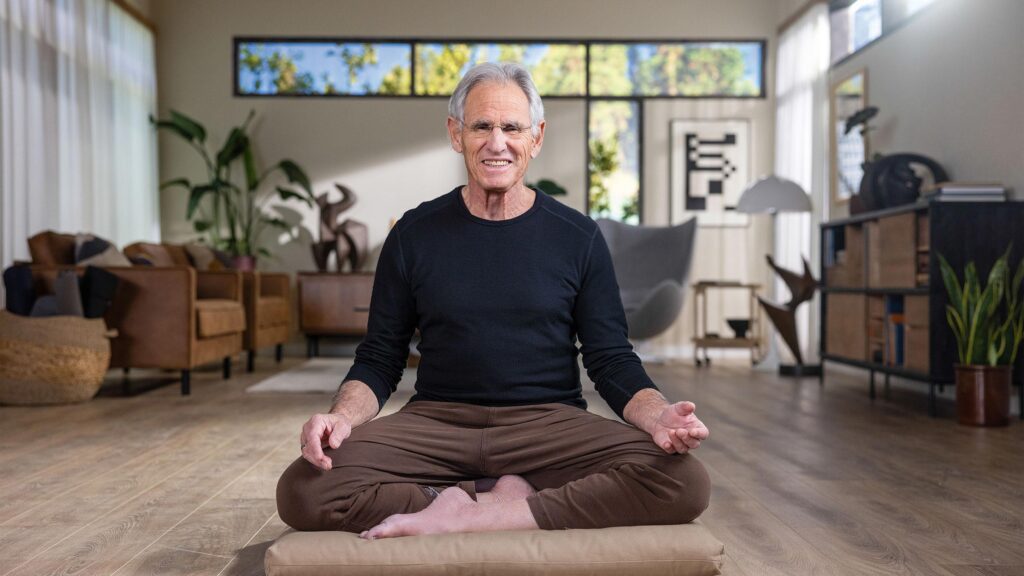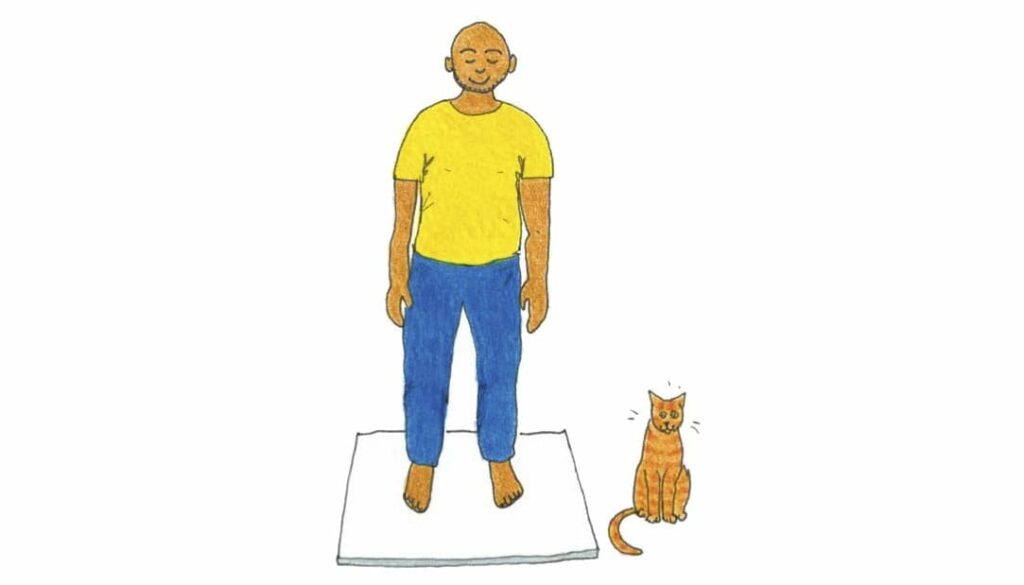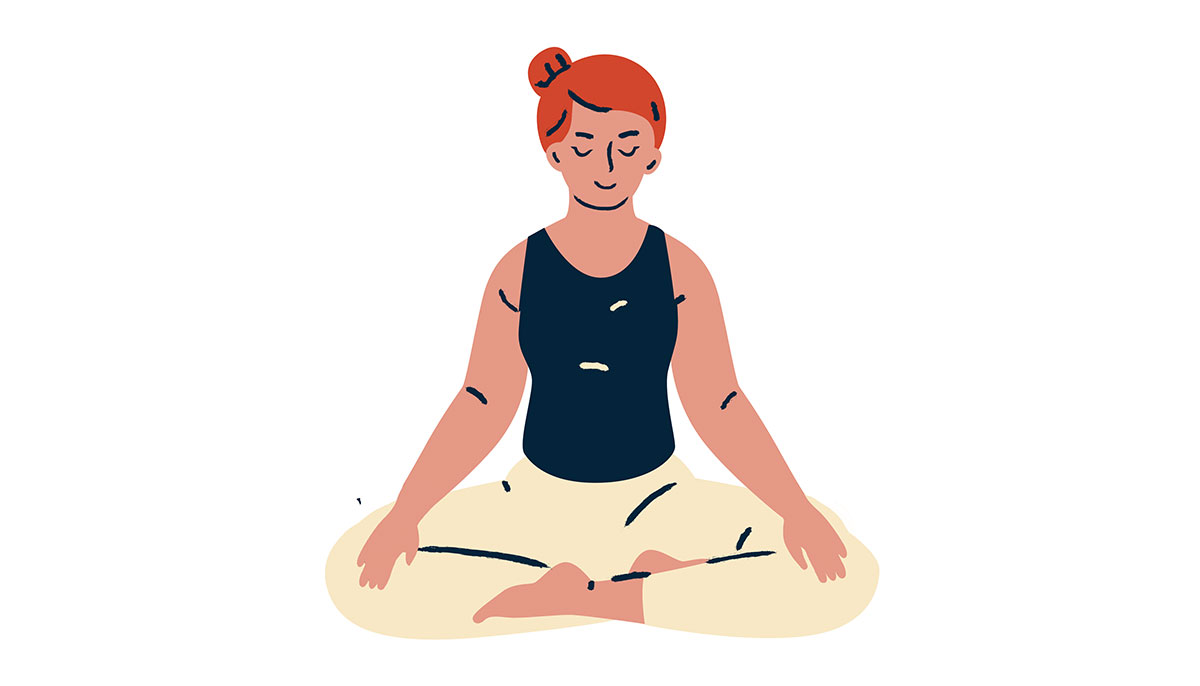
What Is Mindfulness?
Mindfulness is paying attention on purpose. Engaging in mindfulness practice can help build resiliency to stress, strengthen personal relationships, and improve both physical and mental health. In this helpful guide on mindfulness, we answer your questions and offer practices to make everyday more mindful.
Mindfulness is being purposefully aware, without judgement, of what is happening in your mind, body, and environment in the present moment. Mindfulness is both a mind state and a practice where one pays attention on purpose. In a nutshell, mindfulness is intentional awareness.
Through different types of mindfulness practice, we can develop a moment-to-moment awareness of ourselves and our environment, a sense of decreased stress and anxiety, and a greater sense of ease and wellbeing. There is always some element of mindfulness present at any moment — if you are aware, you are being mindful. However, true mindfulness comes when one is both aware and unattached to what is present in their mind, body, and surroundings. This is referred to as the “egoless awareness” of mindfulness.
As Thich Nhat Hanh, known as “the father of mindfulness” puts it, “To practice mindfulness is to become alive.”
Types of Mindfulness Practice
Mindfulness is a basic capability of the mind. It can be practiced for a variety of reasons, and in a variety of ways ranging from spiritual to secular. Since mindfulness is always present in the mind, you can technically practice it in every moment of every day. Whether it be while drinking your morning tea, during your afternoon yoga practice, or observing your breath as you fall asleep, the tool of mindfulness is always available. Some of the most popular ways to practice mindfulness include:
1) Meditation
Seated, walking, body scan, and movement meditations are all beneficial mindfulness practices to center your mind and body in the present moment. Coordinating the mind and breath is an essential part of mindfulness practice in each of these meditation styles. Through focusing on the breath, you can bring an element of mindfulness meditation to any activity you take part in.
2) Taking a Pause
Taking intentional moments to pause throughout your day is one of the easiest ways to insert mindfulness into your life. Any spare moment can be used for a mindful pause. Whether it’s taking three conscious breaths in the waiting room at the doctor, pausing to notice your emotions before sending a reactive email at work, or intentionally noticing your surroundings while driving, a quick, attentive pause can greatly improve your day.
3) Concentration
In every moment of every day, we are faced with a multitude of things to observe. Our days are filled with an endless rotation of thoughts, emotions, movements, objects, interactions, and experiences. By setting the intention to mindfully concentrate on each of these occurrences as they arise, we can naturally infuse mindfulness into our life. This way, mindfulness becomes a natural part of life, without the need to always set aside time solely to practice it.

How to Do Simple Mindfulness Meditation
A basic mindfulness breath meditation can be for any period of time — however long or short you have the space for. To start out, try to allow yourself five minutes of meditation. Read or listen below to learn how to mindfully ground yourself in the present moment.
- Take your seat. Sit cross-legged and upright on a meditation cushion or on a straight-backed chair with your feet flat on the floor. Try to maintain an upright posture, without leaning against the back of the chair.
- Place your hands palms-down on your thighs. With your eyes open, let your gaze rest comfortably as you look slightly downward about six feet in front of you.
- Bring awareness to your breath. Place your attention lightly on your out-breath, while remaining aware of your environment. Be with each breath as the air goes out through your mouth and nostrils and dissolves into the space around you.
- At the end of each out-breath, simply rest until the next in-breath naturally begins. For a more focused meditation, you can follow both the out-breaths and in-breaths.
- Note any thoughts and feelings that arise. Whenever you notice that a thought, feeling, or perception has taken your attention away from the breath, just say to yourself, “thinking,” and return to mindfully following the breath. There’s no need to bring judgement to these thoughts, feelings, or perceptions — you can gently note them as you continue to attend to your breath and posture.
- End your meditation. After the allotted time, you can consider your meditation practice period over. Try to maintain the sense of calm, mindfulness, or openness you’ve experienced through the rest of your day.
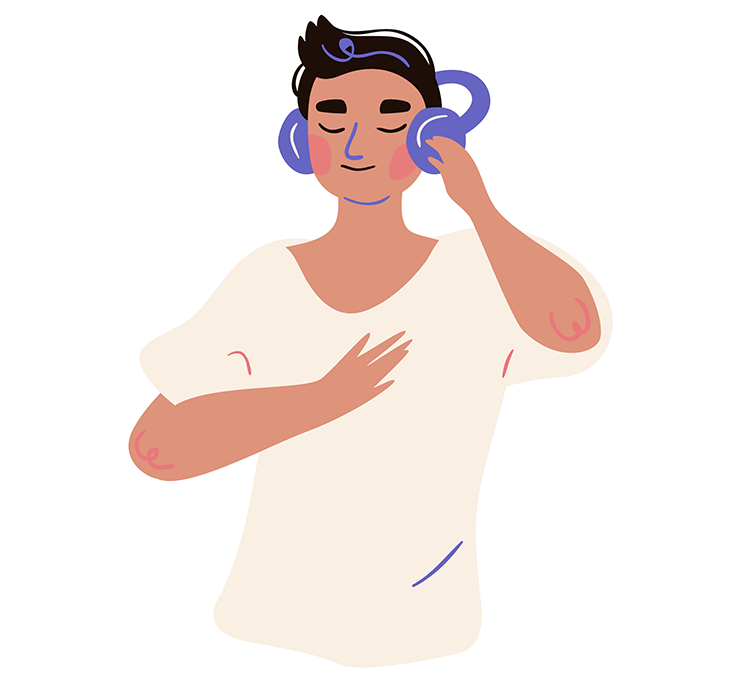
Guided Audio for Beginner Mindfulness Practice
Listen below and practice along with a basic breath meditation. Then, try our one and five-minute meditation timers.
Basic Mindfulness Meditation Instruction
1-Minute Meditation Timer
5-Minute Meditation Timer
Benefits of Mindfulness
Beyond the feelings of calm, clarity, and ease mindfulness cultivates, there are a number of proven benefits to mindfulness practice. Though research on mindfulness is ever-increasing, many scientific studies have already been done on the benefits of mindfulness and meditation in particular. Some of those benefits include:
Improved Physical Health
Neuroscience research has found that mindfulness practices dampen the activity in the amygdala in the brain, while increasing connection between the amygdala and prefrontal cortex. These parts of the brain help us to be less reactive to stressors and recover more easily when stress is experienced. Chronic stress is known to be a major contributing factor to a number of serious health issues, making mindfulness not only a way to improve your day-to-day wellbeing, but a viable tool to improving physical health.
Stronger Personal Relationships
There are a number of studies that have found a positive link between mindfulness and enhanced relationship quality. Since practicing mindfulness helps us to become more resilient to spikes in the stress hormone cortisol, we’re able to remain more level-headed when we have a conflict with someone we’re in a personal relationship with. There are even studies that suggest mindfulness makes both breakups and divorce easier.
The practice is also found to cultivate better relationships between parents and their children, with mindful parenting practices linked to positive behavior in children.
Better Mental Health
Much research has been done linking mindfulness and meditation to better psychological health, aaffirming that mindfulness helps with mild to moderate depression and anxiety and emotional regulation. However, these practices shouldn’t be considered as replacements for treatments for mental illness such as therapy or taking prescription drugs. Instead, you can consider them as adjunct to other treatments, as a way to improve your general well-being.

Questions About Mindfulness
Where does mindfulness come from?
While the modern mindfulness movement is relatively new, Buddhists have been teaching and practicing mindfulness for thousands of years. The concept of mindfulness is rooted in Buddhist philosophy. “Right mindfulness” is the seventh step on the Buddha’s Eightfold Path to awakening, and is explored in early teachings on the Buddhist system of psychology known as the Abidharma. In the Satipatthana Sutta, the Buddha’s fundamental teaching on meditation, he also taught the four foundations of mindfulness.
Does mindfulness help anxiety?
Yes, mindfulness can be a great tool to help ease anxiety. When we’re anxious, we are often filled with worry, self-criticism, shame, and fear. Mindfulness helps us to practice self-compassion, bringing attention to our pain and allowing us to view it from a place of non-judgement. Instead of pushing away or ignoring our anxious thoughts and feelings, we recognize them and allow them to be seen for what they are.
By using mindfulness to return to the present moment, we can recognize where we truly are and detach from what our mind might be telling us. You can also choose to work with a professional trained in Mindfulness-Based Therapy or Mindfulness-Based Stress Reduction to further explore how mindfulness can improve anxiety disorders.
Can mindfulness help you sleep?
Practicing mindfulness can lead to an easier, deeper, and more restful sleep. By bringing mindfulness to our body as we fall asleep, we can ease ourselves into deep relaxation and quiet the mind. If you find your mind too full of chatter and worry to fall asleep, a mindful body scan can be a helpful practice to turn to. A moment of mindfulness in our nighttime routine can ground us in the present moment, allowing our mind and body to relax as we drift off to sleep.
Which is better, mindfulness or multi-tasking?
With so many projects, relationships, and needs pulling our attention in multiple directions every day, multi-tasking may seem like the best choice to knock off items from our to-do lists as quickly as possible. However, while multi-tasking may seem more efficient, our brain quickly becomes overwhelmed trying to complete numerous tasks at once. When we constantly switch between tasks, we end up taking longer and completing them less efficiently than finishing one task at a time. Instead, we can utilize mindfulness to focus on one task at a time, allowing our mind to be fully present with what we’re doing and give it our full attention.

Mindfulness In Everyday Life
Try these practices to bring an element of mindfulness and concentration to your everyday life.
Guided Mindful Tea Meditation
Make yourself a cup of tea and listen to this mindful tea drinking practice by Joseph Emet.
Mindful Eating Practice
Mindful eating is a wonderful way to incorporate mindfulness practice into your daily life. In order to continue living, human beings need the nourishment food provides. This makes eating a life-affirming and life-honoring practice. When we bring our attention to what and how we eat, we connect with ourselves, our loved ones, and the world around us. In truly enjoying the crunch of an apple in autumn, or the sweet chill of ice cream on a summer day, we savor the present moment. When we bring our intentional awareness to the food in front of us, even the ordinary can become extraordinary.
You can practice mindfulness any time you eat or drink throughout the day. Whether it’s for just a few bites, or an entire meal, the practice of mindful eating can help make meal time a more enjoyable, awakening experience.
Try the practice below with any food or drink of your choice, be it a cup of tea, an orange, or cheese and crackers.
- Sit in a peaceful, quiet place with your chosen food. Begin your mindful eating practice by taking three conscious breaths, becoming aware of how your body feels. Notice any areas of tightness or tension in the body, and breathe into these sensations. Take notice of your surroundings — the temperature of the room, and any sounds or smells in your field of awareness.
- Look at your food. How many living beings were involved in bringing it to your plate? Consider the insects, bees, farmers, truck drivers and grocery workers that each played a part in bringing this sustenance to your table. Acknowledge the sun, wind, water, and rain that allowed this food to grow into being, offering your gratitude for their service.
- Check in with your hunger. Are you hungry? How much would you like to eat? Consider the feeling in your stomach, and try gauging how much it would take to satisfy your hunger.
- Look again at the food in front of you. Notice its shape, color, and size. Pick up food and notice it’s texture. Is it heavy or light? Hard or squishy? Rough or smooth? Take note of how it feels in your hand.
- Take a bite of your food and begin to chew. Notice the taste of the food in your mouth. Take note of it’s texture and temperature. Acknowledge whether the food is crunchy, chewy, warm, cold, gritty, or sticky. Do you enjoy the food? Is it better or worse than you expected it to be? There’s no need to judge what you notice — perhaps you chose a piece of chocolate expecting to love it, but now realize it’s a bit too sweet for your liking. Take note of this without attachment to the experience.
- Take more mindful bites. Go slowly, taking note of how the experience changes over time. Do you enjoy the food as much on the fourth bite as you did on the first? Is the texture or temperature changing?
- Honor your hunger and fullness. Throughout your eating experience, check in with your hunger, noticing to what degree your chosen food satisfies your stomach. Feel free to stop eating, or continue eating until you are satisfied.
- Give thanks. Just like we thanked those who played a part in bringing food to your table at the beginning of eating mindfully, thank yourself, too. Your body houses a complex digestive system perfectly designed to break down your food and absorb the nutrients you need to live. Send gratitude to your body for its service in this important, life-giving process.
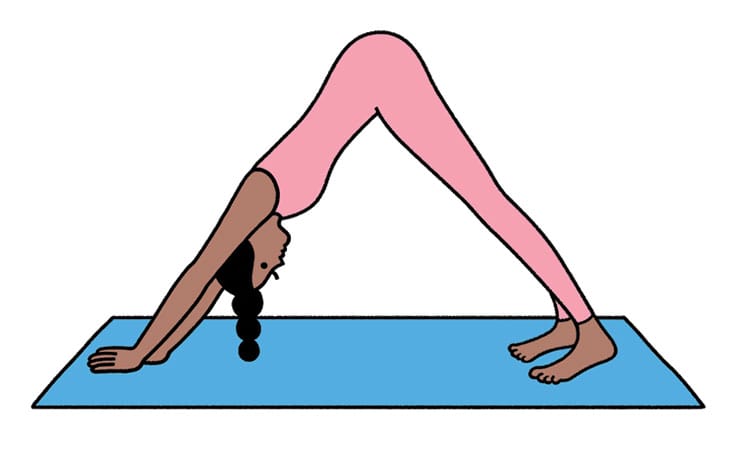
Mindful Movement Practices
Try these mindful movement practices to bring attention and connection to your body.
Go Deeper With Mindfulness
Now that you know what mindfulness is, explore the multitude of ways to go deeper with your mindfulness practice right here on lionsroar.com.
True Dharma Brothers
A snapshot of the special friendship between Larry Rosenberg and Jon Kabat-Zinn — two leading lights of the American vipassana and mindfulness movements — from Madeline Drexler’s introduction to the new Rosenberg book, The World Exists to Set Us Free: Straight-Up Dharma for Living a Life of Awareness. We begin in the early days, after Rosenberg had set aside a successful academic career to dive into dharma and meditation.
Let Your Mind Move
Francis Sanzaro on the profound potential for awakening found in unifying body and mind.
Grow Your Mindfulness in the Garden
Cheryl Wilfong on how to practice the four foundations of mindfulness in the garden.
A More Present Life Starts Now
Life and practice don't need to be separate, writes Emily Horn. She shares how we can integrate moments of meditation into the routine experiences of our every day lives.
The Power of Awareness: Jon Kabat-Zinn in Conversation
The founder of mindfulness-based stress reduction, Jon Kabat-Zinn is considered the father of the American mindfulness movement. Here, he talks to editor-in-chief Melvin McLeod about the essence of mindfulness and how it offers liberation from limiting, self-imposed narratives. This is the first installment of a three-part series.
5 Tips for Mindful Journaling
James C. Hopkins on how—through writing—you can find the flow of awareness, free of judgment.
3 Mindful Movement Exercises
Thich Nhat Hanh offers three mindful movement exercises for well-being, "a wonderful way of connecting your mind and body in mindfulness."
Making Friends with Emotional Eating
If you soothe yourself with food, your body and mind are trying to tell you something. Jenna Hollenstein on how to listen with compassion.
How to Practice “Self-Care”
Koshin Paley Ellison on why true self-care begins with understanding that there’s no separation between self and other.
The Complete Path of Mindfulness
A life-changing journey begins with a single breath. With the simple act of paying mindful attention to one breath, says Melvin McLeod, we step onto a complete path that goes deeper and farther than we can imagine.
The Healing Power of Feeling
“The way to find freedom from difficult emotions is to find it right within the feelings themselves,” writes Andy Karr. Here, he shares a practice for locating and working with difficult feelings in the subtle body to ultimately heal them.
5 Keys to Complete Mindfulness
What are the next steps for understanding complete mindfulness and its comprehensive benefits? Five experts in the mindfulness field explain.
